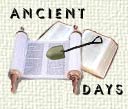

|
There is to this day a stone slab relating the dream of Thutmosis IV, the son of Amenhotep II. This very Thutmosis is probably a second-best, because the son he replaced died during the Passover! The clue is on the stone slab. Thutmosis had been strenuously driving his chariot over the desert. After awhile, he lay down in the shadow of the Sphinx' head, all that was visible above the sand. While sleeping, the Sphinx came to him in a dream and assured the future Pharaoh that if he cleared the sands away, the Sphinx would, in turn, make Thutmosis the next ruler. Thutmosis did so and, sure enough, he became the next Pharaoh! What does this story in stone mean? Some startling truths await those who seek to understand how the stone slab got there in the first place. (For an English translation see: Pritchard 1955: 449). It seems that dreams recorded in the Ancient Near East usually have something to do with someone's "right to rule." Such is the case here, most scholars believe. Thutmosis' right to the throne apparently was shaky. Why? For one thing, the study of ancient records shows that his mother was not the "Great Queen" of Amenhotep II. Rather, she was a lesser wife. Inscriptions written during Thutmosis' reign are few. From them scholars believe his short reign of 9 years was tenuous the whole time. Thus, he may have enlisted the priestly order of the Sphinx-cult to back him. A second fact concerning Thutmosis is that he was not a usurper. But he did reign by default. William C Hayes, eminent Egyptologist says, "This fanciful tale . . . suggests that Thutmosis IV was not his father's heir apparent, but had obtained the throne through an unforeseen turn of fate, such as the premature death of an elder brother" (our italics) (Hayes 1962). A look at Amenhotep II's reign may give a clue to what happened. This Pharaoh began his reign with even more vigorous activity than his father, the great Thutmosis III, builder of the Late Egyptian Empire. During Amenhotep's early reign, gold was so plentiful that the price dropped to the lowest point in Egyptian history. Wealth rolled in from everywhere. Great storehouses were needed. The entire Empire was in good order. And Semitic slaves were available to do the work. Then, suddenly in Amenhotep's 9th year and continuing almost to the end of his reign, there is nearly a complete historical blank. One problem is that Amenhotep II's mortuary temple has never been discovered. The recent discovery of Thutmosis III's temple under a rockslide next to Hatshepsut's temple at Deir el Bahri, may be a clue that a similar fate befell Amenhotep II's mortuary temple. If the latter is discovered, we may well find therein the still-undiscovered Egyptian story of the Exodus. At any rate, if there is so little evidence for most of the reign of Amenhotep II himself, we wonder why any Bible critics make so much of the lack of evidence for the Exodus! After Amenhotep's ninth year, the records of Egypt tell nothing of what happened, except Manetho (much later) who says he fled into Nubia for 13 years. Actually, all we have preserved of Manetho about this situation is what Josephus quotes (Josephus : 26-35.) Raphael Giveon says of this period, "The interval of seventeen years between the last Asiatic campaign of Amenhotep II (year 9) and his death (year 26) was certainly a period of deterioration of Egyptian power in Asia." (Giveon 1968: 54.) What happened to bring this all about? Why this disruption of such a beautiful beginning? There is no explanation for it in any other inscriptions outside the Bible. The startling fact is that the 9th year of Amenhotep II was ca. 1440 BC (Ancient Near Eastern Texts, p. 245, n.l; p.247, n.53.7). And the Bible records that the DATE OF THE EXODUS WAS ALSO ca. 1440 BC! (I Kings 6:9.) The clue to what happened may be found in Exodus (14:28), "The waters returned and covered the chariots, and the horsemen, and of all the host of Pharaoh that came into the sea after them: there remained not so much as one of them." If Amenhotep's land had been devastated by the plagues and his army and chariotry lost in the Red Sea, life would have been unbearable in Egypt! We cannot be certain that Manetho's reference can be applied to this situation. But if it does, it may mean that Amenhotep had no recourse but to go into exile. The only other record of his reign after the 9th year is a little-known and rather strange text from his 23rd year, written to his Nubian vizier. (JNES, 1955: 22-31, in German and hieroglyphics.) When Amenhotep finally died, since "the Lord smote all the firstborn in the land of Egypt . . . the firstborn of Pharaoh . . . ." (Exodus 12:29), the rightful heir died prematurely. Thus, a second-best had to take the throne! In fact, there was likely a contest for the throne. The slab between the paws of the Sphinx tells us who won. Look for it there next time you see a picture of the Sphinx. It may be the visible proof of a Pharaoh who ruled because the rightful heir, the firstborn, perished during the Passover. BIBLIOGRAPHY Giveon, Raphael, Hayes, W. C., Josephus, Flavius, Pritchard, J., |